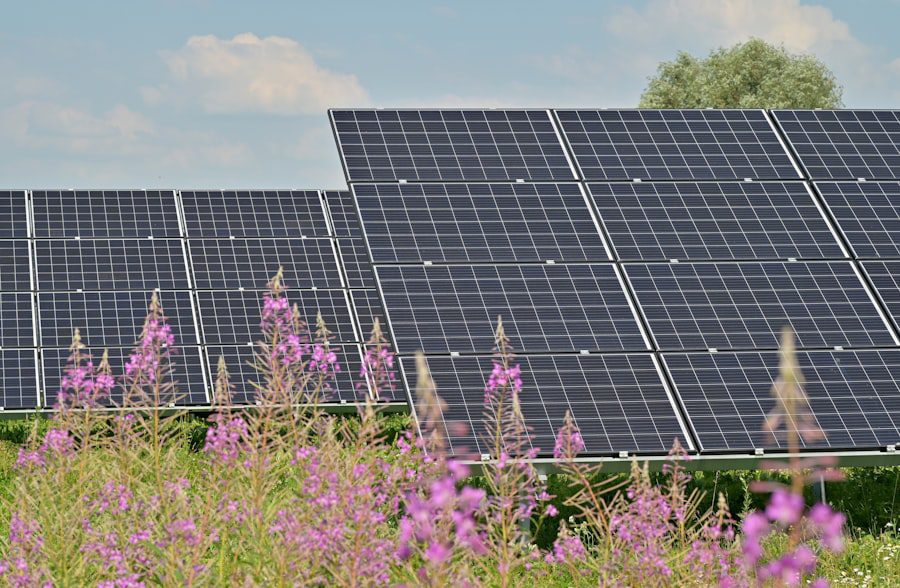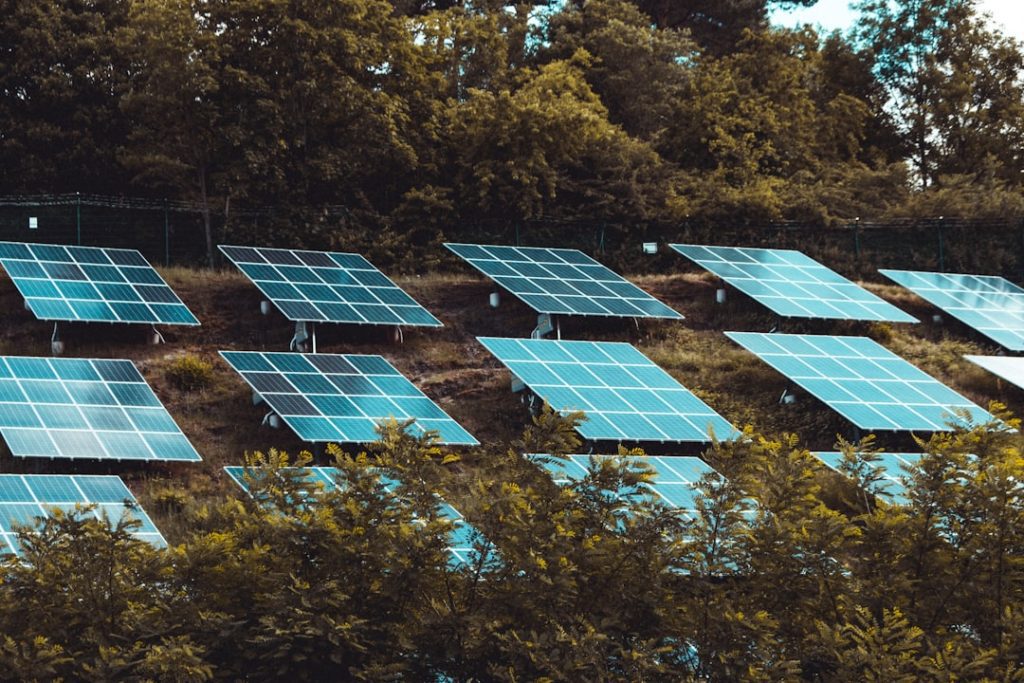Kabul, Afghanistan’s capital, is experiencing an escalating energy crisis due to rapid urban expansion and population growth. The city’s energy demand has risen dramatically, straining existing infrastructure. To address this challenge, the Afghan government, international organizations, and NGOs are implementing various clean energy initiatives.
These efforts aim to decrease fossil fuel dependence, enhance energy efficiency, and promote renewable energy sources. The introduction of clean energy initiatives in Kabul is essential for addressing the current energy crisis, fostering sustainable development, and mitigating climate change impacts. The implementation of clean energy initiatives in Kabul involves a multifaceted approach, including the adoption of renewable energy technologies, energy efficiency measures, and the promotion of sustainable energy practices.
These initiatives aim to reduce greenhouse gas emissions, improve air quality, and enhance energy security in the city. The transition to clean energy is expected to generate new employment opportunities, stimulate economic growth, and improve the overall quality of life for Kabul’s residents. Consequently, the introduction of clean energy initiatives in Kabul represents a significant step towards developing a more sustainable and resilient energy system for the city.
Key Takeaways
- Kabul is making efforts to transition to clean energy through various initiatives and solutions.
- The current energy situation in Kabul is heavily reliant on fossil fuels and is plagued by issues such as pollution and energy insecurity.
- Clean energy solutions in Kabul include solar power, wind energy, and energy efficiency measures.
- Challenges in implementing clean energy initiatives in Kabul include financial constraints, lack of infrastructure, and political instability.
- The benefits of clean energy initiatives in Kabul include reduced pollution, energy security, and economic development, paving the way for a sustainable future.
The Current Energy Situation in Kabul
Energy Insecurity and Economic Consequences
The lack of access to reliable and affordable energy services has hindered economic development and negatively impacted the quality of life in Kabul. The city’s energy infrastructure is struggling to meet the current demand, and the situation is expected to worsen as the population grows and urbanization accelerates.
Environmental Impacts and Health Concerns
The use of fossil fuels for energy production has contributed to air pollution and environmental degradation in the city, posing significant health risks to its inhabitants. The continued reliance on fossil fuels will only exacerbate these issues, making it essential to explore alternative energy sources.
A Sustainable Energy Future for Kabul
The urgent need to transition towards cleaner and more sustainable energy sources cannot be overstated. By doing so, Kabul can address its energy crisis, reduce its reliance on imported fossil fuels, and mitigate the negative impacts on the environment and public health.
Clean Energy Solutions and Initiatives in Kabul

In response to the growing energy crisis, various clean energy solutions and initiatives have been implemented in Kabul to promote the use of renewable energy sources and improve energy efficiency. One of the key initiatives is the development of solar power projects, which harness the abundant sunlight in Afghanistan to generate electricity. Solar panels have been installed on rooftops of buildings, schools, and public facilities across Kabul, providing a reliable source of clean energy and reducing reliance on fossil fuels for electricity generation.
Another important clean energy solution in Kabul is the promotion of energy efficiency measures, such as the implementation of building codes and standards to improve the energy performance of new construction and retrofit existing buildings. These measures aim to reduce energy consumption and lower greenhouse gas emissions, while also lowering energy costs for residents and businesses in Kabul. Additionally, efforts have been made to promote the use of clean cooking technologies, such as improved cookstoves and biogas digesters, to reduce indoor air pollution and improve public health in the city.
Challenges and Obstacles in Implementing Clean Energy Initiatives
| Challenges and Obstacles | Description |
|---|---|
| Lack of Funding | Securing financial resources for clean energy projects. |
| Policy and Regulatory Barriers | Complex and inconsistent regulations that hinder clean energy implementation. |
| Technological Limitations | Challenges in developing and implementing advanced clean energy technologies. |
| Public Resistance | Opposition from communities or individuals towards clean energy projects. |
| Infrastructure Constraints | Inadequate infrastructure for clean energy distribution and storage. |
Despite the progress made in implementing clean energy initiatives in Kabul, there are several challenges and obstacles that have hindered their widespread adoption and impact. One of the main challenges is the lack of financial resources and investment for clean energy projects in Kabul. The high upfront costs associated with renewable energy technologies and energy efficiency measures have limited their deployment, particularly in low-income communities where access to financing is limited.
Another obstacle is the lack of technical capacity and expertise in clean energy technologies among local communities and government agencies in Kabul. This has hindered the effective implementation and maintenance of clean energy projects, limiting their long-term sustainability and impact. Additionally, political instability and security concerns in Afghanistan have posed significant barriers to the development of clean energy infrastructure and investment in Kabul.
Furthermore, there are regulatory and institutional barriers that have impeded the integration of clean energy solutions into the existing energy system in Kabul. The lack of supportive policies, incentives, and regulations for renewable energy deployment has slowed down progress in transitioning towards cleaner and more sustainable energy sources. Addressing these challenges and obstacles will be crucial for accelerating the adoption of clean energy initiatives in Kabul and achieving a more sustainable energy future for the city.
Benefits and Impact of Clean Energy Initiatives in Kabul
The implementation of clean energy initiatives in Kabul has brought about numerous benefits and positive impacts for the city and its residents. One of the key benefits is the reduction of greenhouse gas emissions and air pollution from the displacement of fossil fuels with renewable energy sources. This has led to improved air quality and public health in Kabul, as well as contributed to global efforts to mitigate climate change.
Clean energy initiatives have also had a positive impact on economic development in Kabul by creating new job opportunities and stimulating investment in renewable energy technologies. The development of solar power projects, for example, has created employment opportunities for local communities and has contributed to the growth of a green economy in Kabul. Additionally, the use of renewable energy sources has helped reduce the city’s reliance on imported fossil fuels, improving energy security and resilience in Kabul.
Furthermore, clean energy initiatives have had a positive social impact by improving access to reliable and affordable energy services for residents in Kabul. The deployment of solar panels on rooftops of buildings and public facilities has provided a reliable source of electricity for lighting, heating, and powering essential appliances. This has improved the quality of life for residents, particularly those living in off-grid or underserved areas of Kabul.
Future Plans and Goals for Clean Energy in Kabul

Scaling Up Renewable Energy
One of the key priorities is to increase the deployment of renewable energy technologies such as solar power, wind power, and hydropower. This will not only diversify the city’s energy mix but also reduce its reliance on imported fossil fuels. To achieve this, there are plans to increase investment in clean energy projects and create an enabling environment for private sector participation in renewable energy development.
Improving Energy Efficiency
Another important goal is to improve energy efficiency across all sectors in Kabul. This will be achieved through the implementation of policies, regulations, and incentives that promote sustainable energy practices. This includes enhancing building codes and standards, promoting energy-efficient appliances, and implementing demand-side management programs to reduce overall energy consumption in the city.
Building Capacity and Expertise
To support the development, operation, and maintenance of clean energy projects in Kabul, there are plans to strengthen institutional capacity and technical expertise in clean energy technologies. This will be achieved through training programs, knowledge sharing initiatives, and partnerships with international organizations and academic institutions. This will help build a skilled workforce that can support the growth of clean energy in the city.
The Path to a Sustainable Future for Kabul
In conclusion, the introduction of clean energy initiatives in Kabul represents a critical step towards addressing the city’s growing energy crisis and promoting sustainable development. The transition towards cleaner and more sustainable energy sources is essential for improving air quality, reducing greenhouse gas emissions, enhancing energy security, and stimulating economic growth in Kabul. Despite the challenges and obstacles that have hindered progress in implementing clean energy initiatives, there are numerous benefits and positive impacts that have been realized for the city and its residents.
Moving forward, it will be crucial to address these challenges and obstacles through increased investment, technical capacity building, supportive policies, and regulatory frameworks that promote clean energy deployment in Kabul. By doing so, Kabul can build a more sustainable and resilient energy system that meets the needs of its growing population while contributing to global efforts to combat climate change. The path to a sustainable future for Kabul lies in accelerating the adoption of clean energy initiatives and working towards a more inclusive, equitable, and environmentally friendly energy system for all residents of the city.
One related article to Clean energy initiatives in Kabul is “Maximizing Market Reach: Coal Briquette Penetration Strategies” which discusses the strategies for increasing the market reach of coal briquette products. This article provides insights into how coal briquettes can be promoted and distributed effectively to maximize their impact on clean energy initiatives. You can read the full article here.
FAQs
What are clean energy initiatives in Kabul?
Clean energy initiatives in Kabul refer to efforts and projects aimed at promoting the use of renewable and sustainable energy sources, such as solar, wind, and hydro power, to reduce reliance on fossil fuels and decrease environmental impact.
What are some examples of clean energy initiatives in Kabul?
Some examples of clean energy initiatives in Kabul include the installation of solar panels on buildings, the development of wind farms, the implementation of energy efficiency programs, and the promotion of electric vehicles.
Why are clean energy initiatives important in Kabul?
Clean energy initiatives are important in Kabul to reduce air pollution, combat climate change, improve energy security, and create economic opportunities in the renewable energy sector.
How are clean energy initiatives being implemented in Kabul?
Clean energy initiatives are being implemented in Kabul through government policies, public-private partnerships, international aid and investment, and community-led projects.
What are the benefits of clean energy initiatives in Kabul?
The benefits of clean energy initiatives in Kabul include reduced greenhouse gas emissions, improved air quality, energy independence, job creation, and lower energy costs for consumers.



